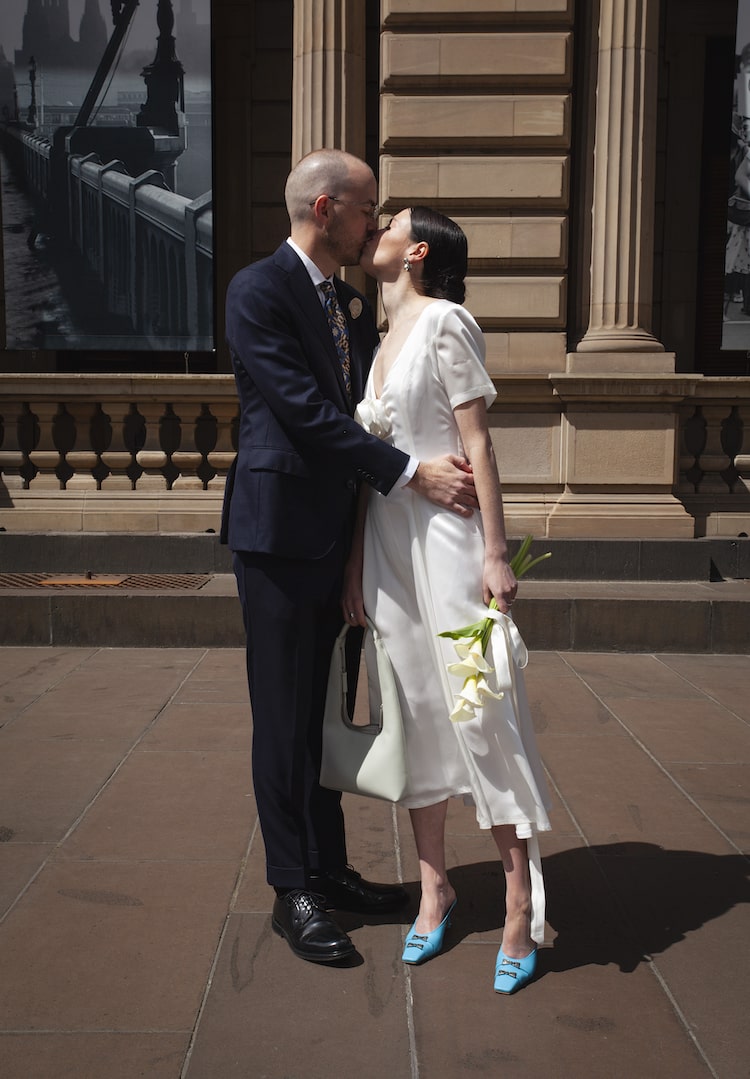Why brides are ditching traditional wedding rings
WORDS BY KAYA MARTIN
Ring revolution.
The ring, the kiss, the white dress: these are the things that spring to mind when we think of a wedding. These are the symbols that are burnt into our minds and what many of us grow up dreaming of.
Yet these days, many couples aren’t as tied to conventions as they once were. They’re opting for beaches, hotels and parks over churches. They’re ditching the stuffy (and lowkey sexist) traditions of ‘giving away the bride’. Hell, some are even swapping out wedding cake for doughnut towers or a croquembouche.
For more fashion news, shoots, articles and features, head to our Fashion section.
According to Talitha Cummins, Founder of The Cut Jewellery, many couples are also choosing to forego the traditional wedding ring for something a little different.
“When I was doing my research and starting the company last year, I was speaking to people in my target market who were between 25 and 35, and these girls were telling me that they didn’t want to put another ring next to their engagement ring because it would take away from the beautiful ring they’ve got on their wedding hand,” she tells me. “Instead they were getting a completely different ring or a diamond band for the other hand.”
The traditional wedding band, usually worn on the ring finger of the non-dominant hand, dates back all the way to ancient Rome. It’s said the wedding ring goes on this finger because it contains the vena amoris – the ‘vein of love’ – which was said to run directly to the heart (not exactly anatomically correct, but they didn’t know that kind of thing back then).
In Western tradition, the bride would wear both the engagement ring and the wedding ring on the same finger, sometimes choosing to get the two pieces soldered together to prevent them from rubbing against each other. While the engagement ring would usually feature a diamond, wedding bands are typically quite simple, usually plain bands forged from gold, silver, palladium or other metals.
But Talitha tells me that because engagement rings have become the centre of attention, many new brides want the piece to stand alone. “The engagement ring should be the focal point,” she says. “I just think that if you’re putting another ring beside it, you’re sort of detracting from the focus.”
She says modern brides like wearing the wedding ring on the other hand because it frees them up to have a little more fun with their choice. It also gives them a greater sense of symmetry to have one ring on each hand instead of the bulkiness of two rings on the same finger.
“I loved that idea of having a ring on a different hand. It can be a different style, it can be something completely different, it can be a bit more daring, where your engagement ring is more timeless and classic. You can experiment a little bit with the wedding band.”
When it comes to men’s wedding rings, Talitha said that even though men don’t have another ring on the same finger, they often complain about the discomfort of having to wear it at all.
“The collections are really pretty basic because a lot of men say ‘I can’t wear it because it hurts my hand,’ or they just want something really plain that they can wear every day,” she says.
This could be one of the reasons behind another wedding band trend: silicone. The material is lightweight, slim, extremely cost-effective and surprisingly durable, which is why many people who aren’t used to the sensation of wearing a ring can be drawn to them. They can do the trick to signify love and represent an enduring connection. Still, due to the cheapness and commonality of the material, they’re not likely to hold their value or become an heirloom.
Every relationship is unique in its own way and as such, every couple will have a different perspective when it comes to deciding on the jewellery that’ll represent their love. “A ring is a significant part of the wedding and the whole experience,” says Talitha. “It’s whatever suits you.”
For more on the history of wedding traditions, head here.









